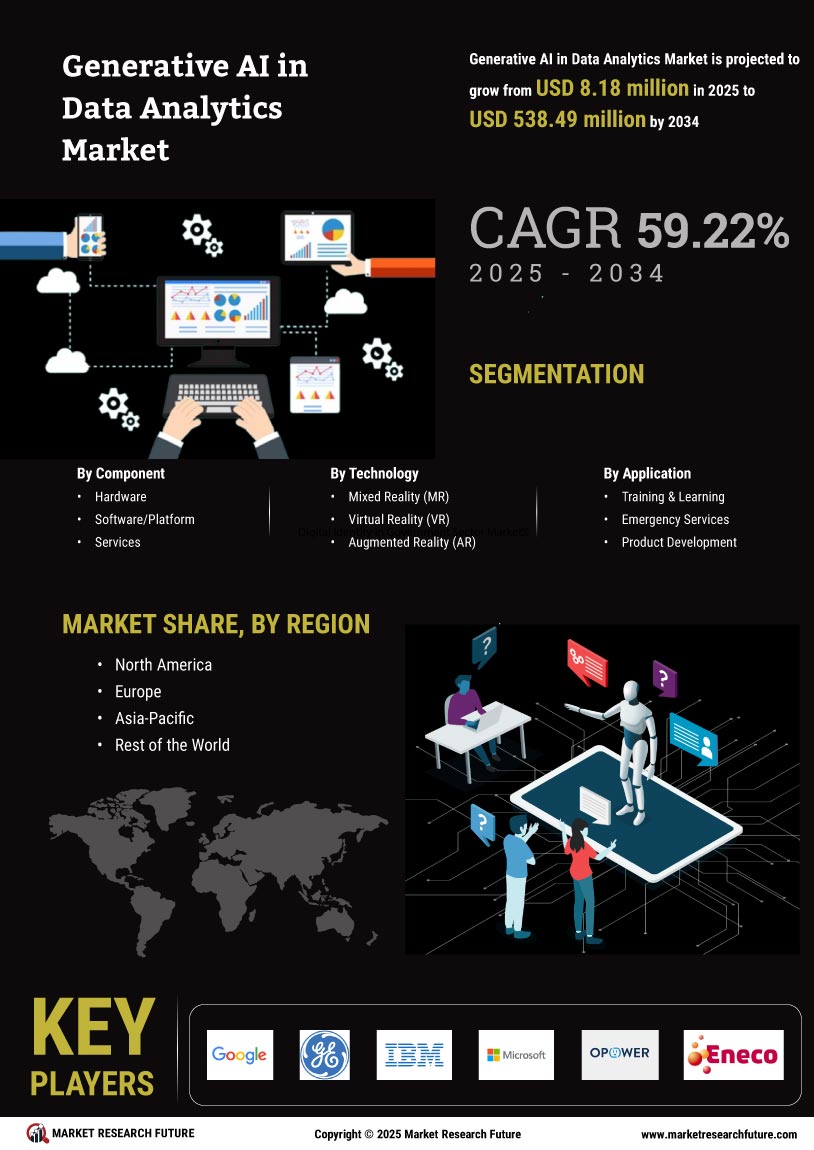Rising Demand for Data-Driven Insights
The Generative AI in Data Analytics Market is experiencing a notable surge in demand for data-driven insights. Organizations across various sectors are increasingly recognizing the value of data analytics in driving strategic decision-making. According to recent estimates, the market for data analytics is projected to reach USD 274 billion by 2025, indicating a compound annual growth rate of approximately 30%. This growth is largely fueled by the need for businesses to harness vast amounts of data to gain competitive advantages. Generative AI technologies are particularly well-suited for this purpose, as they can analyze complex datasets and generate actionable insights. Consequently, the integration of generative AI into data analytics is becoming a critical component for organizations aiming to enhance their operational efficiency and market positioning.
Expansion of Use Cases Across Industries
The Generative AI in Data Analytics Market is characterized by the expansion of use cases across various industries. From healthcare to finance, organizations are increasingly leveraging generative AI to enhance their data analytics capabilities. For instance, in healthcare, generative AI is utilized for predictive analytics to improve patient outcomes, while in finance, it aids in risk assessment and fraud detection. This diversification of applications is driving market growth, with projections indicating that the adoption of generative AI in data analytics could lead to a market value of USD 30 billion by 2026. As industries continue to explore innovative applications of generative AI, the demand for advanced data analytics solutions is likely to increase.
Growing Importance of Real-Time Analytics
The Generative AI in Data Analytics Market is witnessing a growing emphasis on real-time analytics. In an era where timely decision-making is paramount, organizations are increasingly seeking solutions that provide immediate insights from their data. Generative AI technologies facilitate real-time data processing and analysis, enabling businesses to respond swiftly to market changes and customer needs. This shift towards real-time analytics is reflected in market trends, with a projected increase in demand for real-time data solutions expected to reach USD 15 billion by 2025. As organizations strive to enhance their agility and responsiveness, the integration of generative AI into data analytics is becoming essential for maintaining a competitive edge.
Advancements in Machine Learning Algorithms
The Generative AI in Data Analytics Market is significantly influenced by advancements in machine learning algorithms. These innovations enable more sophisticated data analysis techniques, allowing organizations to extract deeper insights from their data. Recent developments in deep learning and neural networks have enhanced the capabilities of generative AI, making it possible to analyze unstructured data more effectively. As a result, businesses are increasingly adopting these technologies to improve their data analytics processes. The market for machine learning in data analytics is expected to grow substantially, with projections indicating a potential increase to USD 20 billion by 2026. This trend suggests that organizations are prioritizing investments in generative AI solutions to leverage the full potential of their data.
Increased Focus on Data Privacy and Security
The Generative AI in Data Analytics Market is also shaped by an increased focus on data privacy and security. As organizations collect and analyze vast amounts of data, concerns regarding data breaches and compliance with regulations have intensified. Generative AI technologies can play a pivotal role in addressing these concerns by providing advanced security measures and ensuring data integrity. The market for data privacy solutions is projected to grow significantly, with estimates suggesting a potential value of USD 12 billion by 2025. This trend indicates that organizations are prioritizing the implementation of generative AI solutions that not only enhance data analytics capabilities but also safeguard sensitive information.


















Leave a Comment